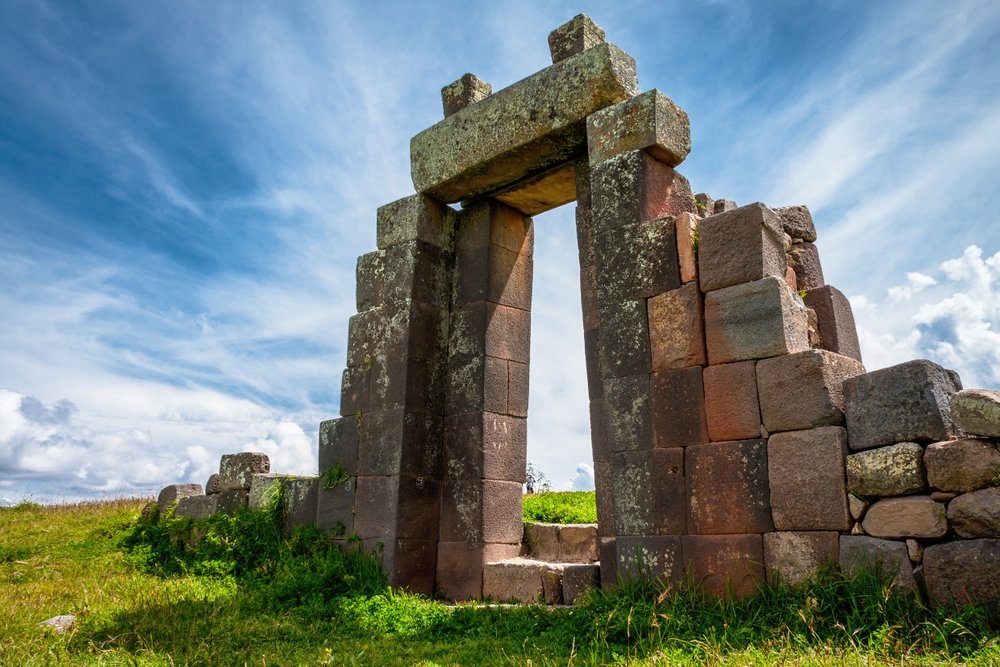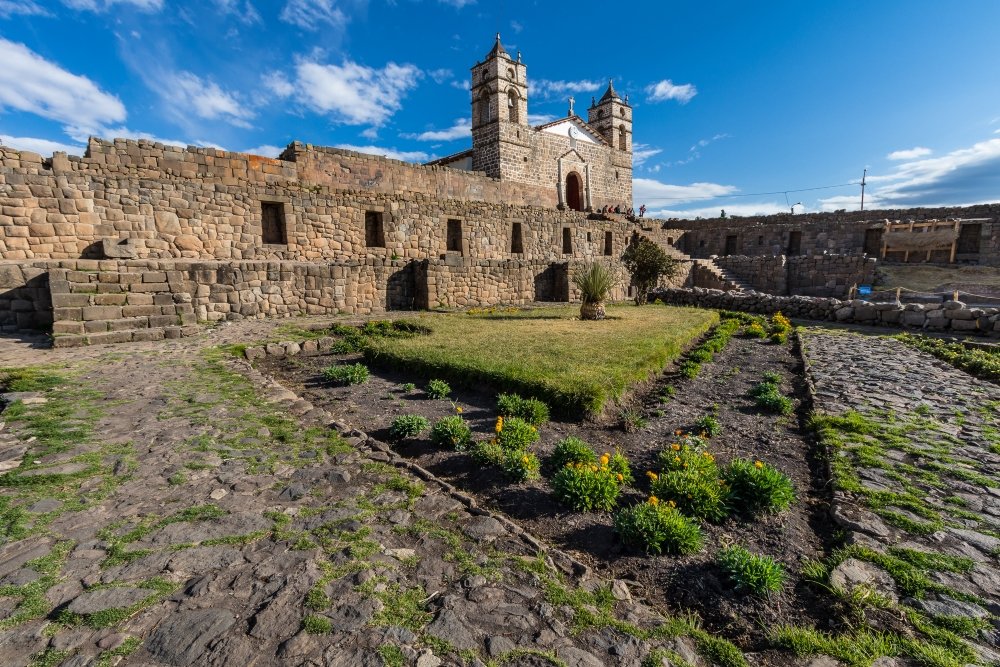Archaeological Complex of Vilcashuaman | Ayacucho
The term “Vilcashuamán” comes from Quechua, the indigenous language spoken by the Incas and still used by many communities in the Andes. “Vilca” means “golden thread” and “Huamán” translates to “falcon”.
Therefore, “Vilcashuamán” can be interpreted as “falcon of the golden thread” or “sacred place of the golden thread”. This name likely carries symbolic or religious connotations in Inca culture, though the exact interpretations may vary.
Vilcashuamán is located in the province of Vilcas Huamán, in the region of Ayacucho, Peru. It is situated in the Peruvian Andes, at an altitude of around 3,500 meters above sea level. The province of Vilcas Huamán is approximately 60 miles (about 100 kilometers) north of the city of Ayacucho, the regional capital.
History of Archaeological Complex of Vilcashuaman | Ayacucho
The Archaeological Complex of Vilcashuamán has a fascinating history dating back to the time of the Inca Empire in Peru. Here’s a summary of its history:
- Pre-Inca origins: While Vilcashuamán is best known for its association with the Incas, the site has pre-Inca roots. Before the arrival of the Incas, the region was inhabited by earlier cultures such as the Wari and the Huari, who also left evidence of their presence in the area.
- Inca period: During the height of the Inca Empire, Vilcashuamán became an important administrative and religious center. It is believed to have been built during the reign of Pachacuti Inca Yupanqui, the ninth Inca ruler, around the 15th century. Vilcashuamán was used as a regional government center and as a sacred place dedicated to the worship of the Sun god, Inti.
- Administrative and religious function: Vilcashuamán played a crucial role in the administration of the Inca Empire in the central region of the Peruvian Andes. In addition to serving as a center for religious worship, the site also housed administrative buildings and residences for Inca officials.
- Spanish conquest: With the arrival of Spanish conquistadors in the early 16th century, Vilcashuamán lost its political and religious significance. The Spanish looted the site in search of gold and subjected it to colonial administration.
- Rediscovery and modern excavations: During the 20th century, Vilcashuamán was rediscovered, and archaeological excavations began to study and preserve the site. These excavations have revealed the complexity of Inca architecture and shed light on daily life in the complex during the Inca period.
Today, the Archaeological Complex of Vilcashuamán is an important tourist destination in Peru and is recognized as a UNESCO World Heritage Site. Visitors can explore the ruins and learn about the fascinating history of this ancient Inca center.

¿What to see in the Archaeological Center of Vilcashuaman?
At the Archaeological Complex of Vilcashuamán, visitors can explore a variety of structures and features that offer a fascinating insight into Inca architecture and life. Here are some things to see in the archaeological center:
- Main Plaza: This large rectangular plaza is the heart of the archaeological complex. It is surrounded by terraces and impressive stone walls. At the center of the plaza stands a carved rock known as the “Altar of the Sun,” believed to have been used for religious ceremonies.
- Temple of the Sun: This temple, located near the Main Plaza, is one of the main points of interest in Vilcashuamán. Although much of the structure has been eroded by time, some walls and corridors can still be appreciated.
- Inca Palace: This complex of rectangular structures is believed to have been the residence of Inca rulers in Vilcashuamán. Visitors can walk through the remains of the rooms and admire Inca architecture.
- Inca Lookout: From this elevated point, visitors can enjoy stunning panoramic views of the surrounding landscape, including mountains and valleys. It’s an ideal spot for photography and to appreciate the majesty of the Peruvian Andes.
- Agricultural Terraces: Vilcashuamán features a series of agricultural terraces that showcase the Inca’s ability to build cultivation systems on steep slopes. These terraces are still used for agriculture by local communities.
- Vilcashuamán Site Museum: Located near the archaeological complex, this museum displays a variety of artifacts and objects found at the site during archaeological excavations. It provides an excellent opportunity to learn more about the history and culture of Vilcashuamán and the Incas.
Exploring the Archaeological Complex of Vilcashuamán is an enriching experience that offers a unique insight into Inca life and civilization in the Peruvian Andes.
How to get to the Vilcashuaman Archaeological Complex?
Recommendations for visiting Vilcashuaman
Here are some recommendations for visiting Vilcashuamán:
- Research and plan in advance: Before your trip, research Vilcashuamán and plan your visit accordingly. Make sure to know the opening hours, entrance fees, and road conditions. It’s also helpful to learn a bit about the history and Inca culture to fully appreciate your experience.
- Wear appropriate clothing and footwear: Vilcashuamán is located in the mountains, so the weather can be unpredictable and vary throughout the day. Wear comfortable and warm clothing, as well as suitable footwear for walking on uneven terrain.
- Protect yourself from the sun: The sun at high altitudes can be intense, so be sure to bring sunscreen, a hat or cap, and sunglasses to protect yourself from UV rays.
- Bring water and snacks: Staying hydrated is important, especially if you plan to hike from Vischongo to the archaeological complex. Bring enough water and some energy snacks to replenish your energy during your visit.
- Respect the archaeological site: Vilcashuamán is a protected archaeological site, so make sure to respect the rules and regulations of the area. Do not touch or take any objects from the site, and follow the instructions of the site staff.
- Enjoy the scenery and culture: Vilcashuamán not only offers impressive Inca ruins but also beautiful natural landscapes. Take the time to enjoy the surroundings and learn about the history and culture of the area.
- Consider hiring a guide: If you want to gain a deeper understanding of the site and its history, consider hiring a local guide. Guides can provide additional information and help you make the most of your visit.
By following these recommendations, you’ll be able to fully enjoy your visit to Vilcashuamán and have an unforgettable experience exploring this fascinating archaeological site in the Peruvian Andes.













